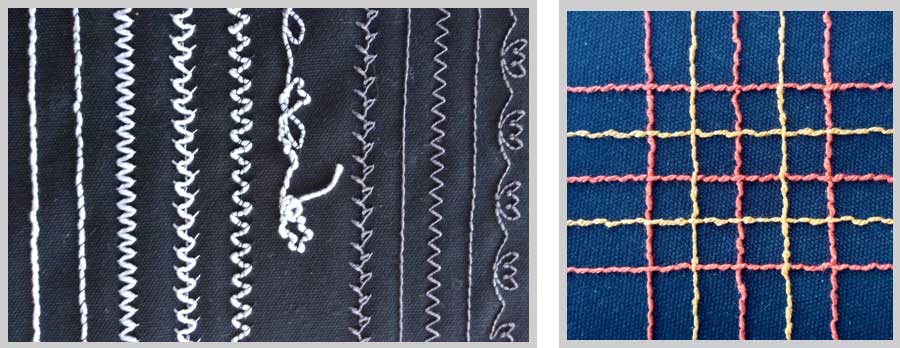Why Men Have Been Crafting Their Own Clothes Over Lockdown
by Nick Pope, adapted from a story on esquire.com/uk/ on 8/18/20
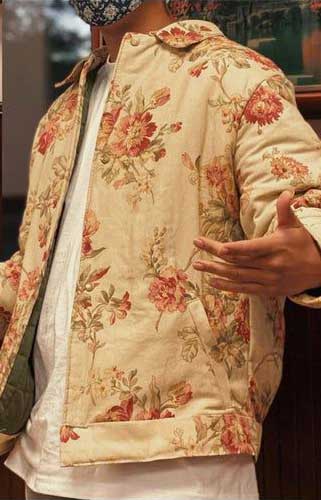 It all started with a pair of old curtains. In late March, as Colorado crept into lockdown, 23-year-old Jonathan Simanjuntak began his search for a new hobby. “Quarantine was getting really serious,” he told me from his home in Aurora, a city spread across two of the state’s hardest hit counties. It didn’t take him long to land on sewing. “If I’m being super honest, the fact that I can’t afford Gucci and APC [a French RTW brand] had a lot to do with it.”
It all started with a pair of old curtains. In late March, as Colorado crept into lockdown, 23-year-old Jonathan Simanjuntak began his search for a new hobby. “Quarantine was getting really serious,” he told me from his home in Aurora, a city spread across two of the state’s hardest hit counties. It didn’t take him long to land on sewing. “If I’m being super honest, the fact that I can’t afford Gucci and APC [a French RTW brand] had a lot to do with it.”
Before the local government could stop him, Jonathan raided thrift shops for fusty fabrics, damaged clothes, and any rag that might prove useful. Three months later, after a lot of trial-and-error and YouTube tutorials, he uploaded his first big project to the 260,000-strong Reddit community /r/sewing: a Dickies-inspired work jacket, upcycled from a blanket and some floral curtains he found at Goodwill. It immediately shot to the top of a subreddit almost entirely dominated by dresses. “Thank you everyone for the nice comments,” he wrote at the top of the post, which gained seven thousand upvotes. “I’m smiling a lot!”
Fusty: smelling stale, damp, or stuffy
It should come as no great surprise that /r/sewing has grown in popularity. As stringent lockdown measures loomed, the world got busy keeping busy. Google searches for “sewing machines” jumped by 400 percent in the U.S., and John Lewis [a British department store] reported that sales of them had risen by 127 percent over April. What might come as a surprise, however, is the number of men who began posting their own creations—from face masks to full outfits—on the forum, a real rarity before the pandemic hit. “I see a lot of new seamsters like me popping up in the subreddit every day,” Jonathan told me. “The first time you put your own work on your body feels like magic—it’s wild addicting.”
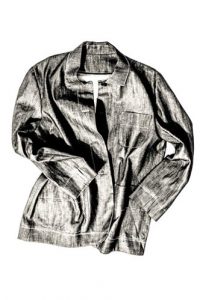
According to Merchant & Mills, a former warehouse-turned-sewing emporium in Rye, East Sussex, England, more men than ever are taking to the craft. The British draper received a month’s worth of orders each day at the start of lockdown, but it was their template for a men’s workwear silhouette that reigned supreme. “The Foreman Jacket shot through the roof. It was the best-selling pattern by miles,” says Carolyn Denham, who co-founded the company ten years ago. Even before lockdown, she noticed that men were finally beginning to see the value in producing their own clothes with long-lasting materials. “Sewing doesn’t have to be this mumsy, cutesy thing with pink scissors,” she told me. “Men relate to it being a ‘quality’ thing. I think they hook straight into that.”
Redditor Mehedi Sarri, a 32-year-old librarian from Toulouse, France, learned to sew when he lost his job back in 2017. “When you start sewing, spending six to eight hours on a garment, you realize the value of your clothes.” he says. A new job in 2018 meant that Mehedi’s hobby fell by the wayside, but lockdown presented the perfect opportunity to get back on the horse. A fan of Japanese fabrics like Kokka and Nani IRO, he crafted his own shirts, coats, trousers, and of course, face masks. “Three of my friends expressed their will to have some training sessions with me.That made me so happy,” he says. “I also taught one friend how to sew right after confinement, and he made a bunch of masks.”
Ishmael Jasmin, a 20-year-old Redditor from Los Angeles, has even started selling his own streetwear pieces crafted with woven blanket materials, including a pair of Space Jam-themed shorts. “Sewing has been very beneficial to my mental health,” he told me. “Don’t get me wrong, some projects can be draining and annoying. But when I’m creating something, I don’t have to really worry about any outside noise. Just me and my machine is a perfect combo.”
Original article on esquire.com/uk/
~Betty Watts, ASG member
Betty was the publisher of the print edition of ASG Notions for 20 years. She says, “I like Jonathan’s word ‘seamsters’ much better than sewers or sewists.”





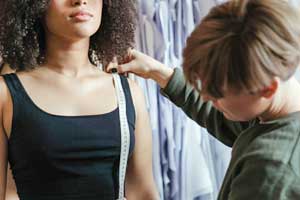 We’ve all done it. You cut that precious fabric, and you cut it wrong. Once you’ve made that cut, you can’t undo it. And now you don’t have enough to recover from your mistake. ARGH! Whether taking body measurements, marking seam allowances, or cutting quilt squares, when we sew, we need to measure accurately every time if we want our project to come out correctly.
We’ve all done it. You cut that precious fabric, and you cut it wrong. Once you’ve made that cut, you can’t undo it. And now you don’t have enough to recover from your mistake. ARGH! Whether taking body measurements, marking seam allowances, or cutting quilt squares, when we sew, we need to measure accurately every time if we want our project to come out correctly.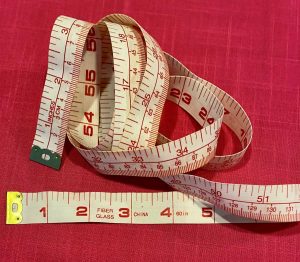
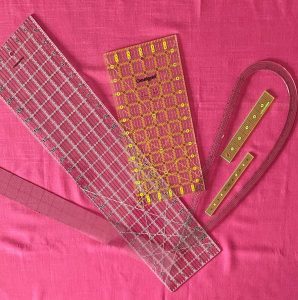

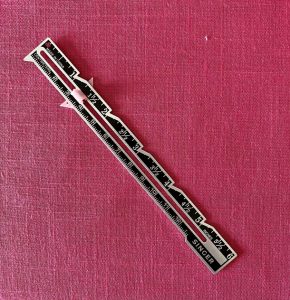
 If you do choose to add some new tools to your sewing box, don’t forget to check the Member’s Only
If you do choose to add some new tools to your sewing box, don’t forget to check the Member’s Only 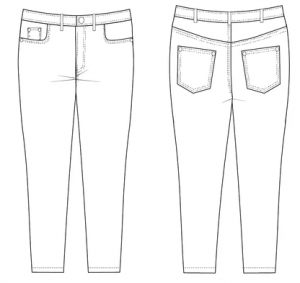 Q. Item Created
Q. Item Created 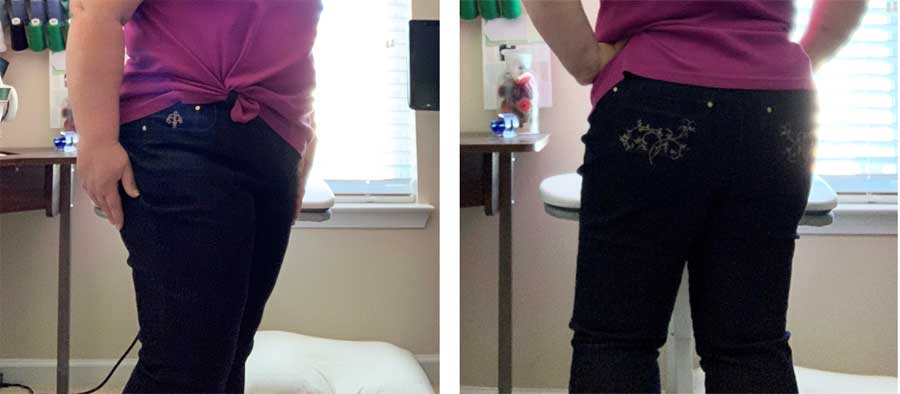

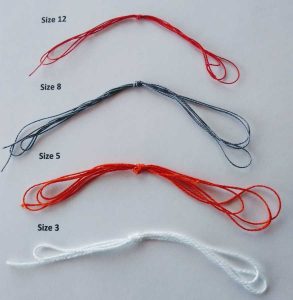 The thread is categorized by its strand size, you’ll find size #3, 5, 8 and 12 to be the most common sizes–the higher the number, the smaller the thread diameter. All four of these sizes can be used with machine sewing, but perhaps not as you might think.
The thread is categorized by its strand size, you’ll find size #3, 5, 8 and 12 to be the most common sizes–the higher the number, the smaller the thread diameter. All four of these sizes can be used with machine sewing, but perhaps not as you might think.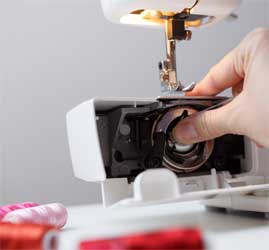 Insert the bobbin in the machine, bypassing the bobbin tension spring. Use the handwheel to bring the bobbin thread to the top so you can hang onto it as you begin sewing. Turn off any automatic thread cutting feature.
Insert the bobbin in the machine, bypassing the bobbin tension spring. Use the handwheel to bring the bobbin thread to the top so you can hang onto it as you begin sewing. Turn off any automatic thread cutting feature.